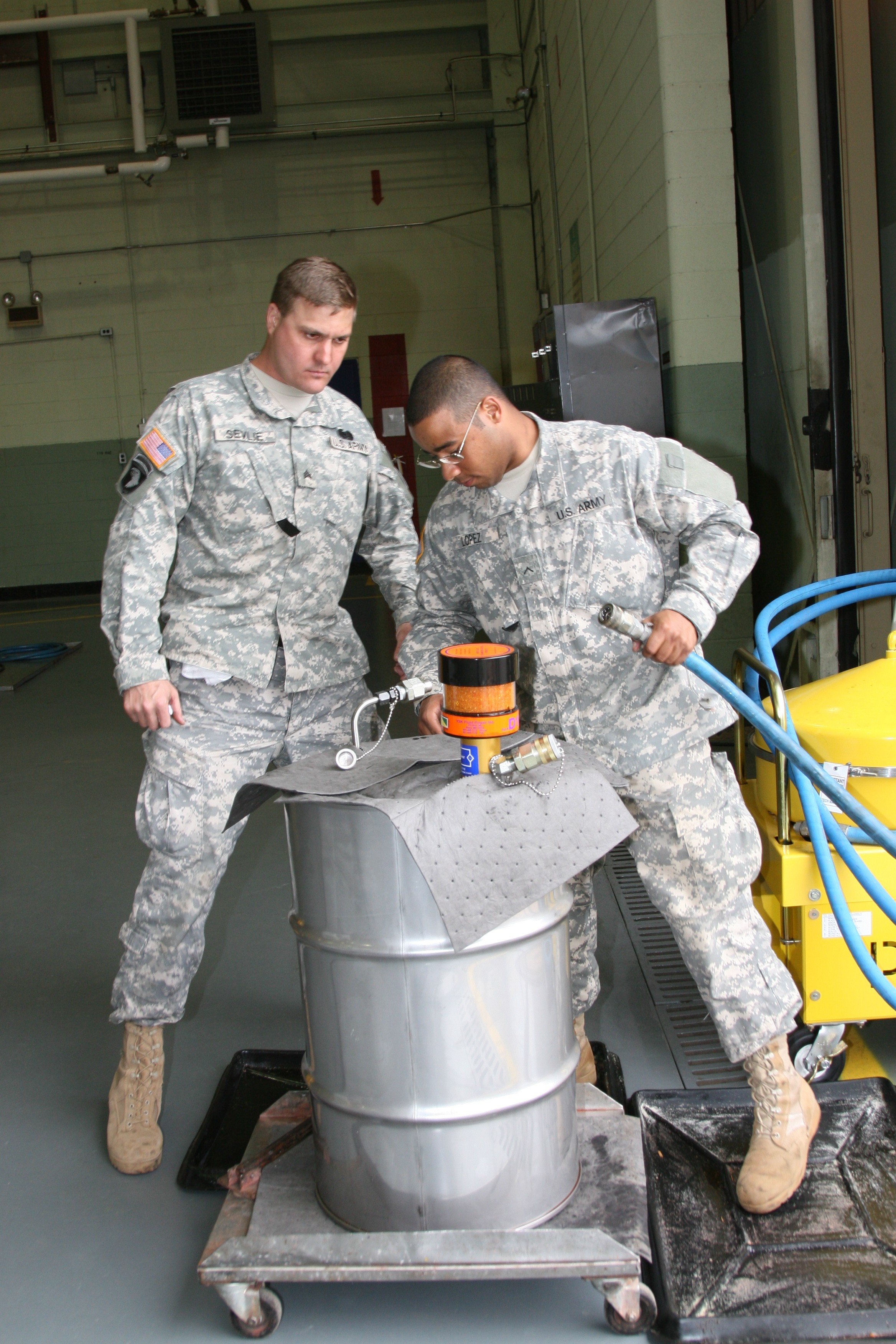Soldiers and National Guardsmen who attend the 15H Aircraft Pneudraulics Systems Repairer course here will now know how to remove contaminated hydraulic fluid from any Army aircraft because of new training equipment that recently arrived at Fort Rucker.
An AH-64 Apache flight control simulator was delivered here from Fort Eustis, Va., in late December to help teach students how to remove aircraft hydraulic fluid, the "bleed-and-flush" portion of the course, according to Staff Sgt. Charles Cannon, a 15H instructor-writer, Headquarters and Headquarters Company 1st Battalion, 13th Aviation Regiment.
The course itself is also pretty new, according to Sgt. 1st Class Virgil Green, hydraulics branch chief, HHC, 1st Bn., 13th Avn. Regt.
The Army moved its part of the Air Force/Army combined course from Sheppard Air Force Base in Wichita Falls, Texas, to Fort Rucker in late 2006, Green said. The 12-week, two-day 15H course began here in January 2007.
"We never taught bleed-and-flush because we had nothing we could teach it on," said Capt. Joshua Severs, HHC, 1st Bn., 13th Avn. Regt. commander.
The hydraulic fluid removal is only one portion of the course. The course teaches about pneudraulics of the whole helicopter, he added.
Students recently tried out the new simulator located in Yano Hall to practice the process. To perform the procedure, students started up a self-sustaining 4,000-pound Aviation Ground Power Unit, considered a turbine engine on wheels, which is connected to the aircraft simulator to supply hydraulic power to the simulator. Separate lines connect the simulator to the AGPU. The AGPU supplies new hydraulic fluid to the simulator which in turn sends the old fluid to a 35-gallon drum.
Apache repairers at Fort Eustis used the training equipment as a flight control simulator for repair courses and upgraded to AH-64D Apache Longbow repair equipment, Green said.
Before the new equipment, when Soldiers left the course, they were taught bleed and flush at units around the Army, according to Staff Sgt. William Hembree, another 15H instructor-writer.
"The simulator builds (the students') confidence," he said.
Green said the hydraulic fluid removal part of the course teaches students to perform all aspects of their new military occupational specialty.
"(It) better prepares students especially National Guardsmen who might be the only 15H in their units," he said. "It saves time because (they) don't have to go to a unit and get more training. (It's) one of our critical tasks because it's important and (they) may have to do it in the field during a deployment."
Cannon described the bleed and flush procedure as "the meat and potatoes of our job."
"A lot of Soldiers, when they leave here, (may) get to their first unit and go straight to Iraq," Severs said. "(They) may be the only 15H in the unit and there may be no one there to teach them. (We're) removing the burden of that Soldier and unit of not having the proper training to do the MOS."
Course student Sgt. Ross Sevlie, a full-time National Guardsman from Savannah, Ga., said learning how to conduct a bleed and flush gives him hands on experience and "the ability to see what (we've) read about it in the training manuals."
It was very enlightening for him, he said.
"If we're deploying (this) will be a very big plus," Sevlie said.
Fellow 15H student Pvt. Israel Lopez said he'll know how to perform every aspect of his new MOS thanks to the new training.
"This is an amazing opportunity to get a chance to get further in-depth with our job," said Lopez. "(I) learned how to service the components of the simulator and take apart and put together the AGPU and it's components to service it if need be."


Social Sharing